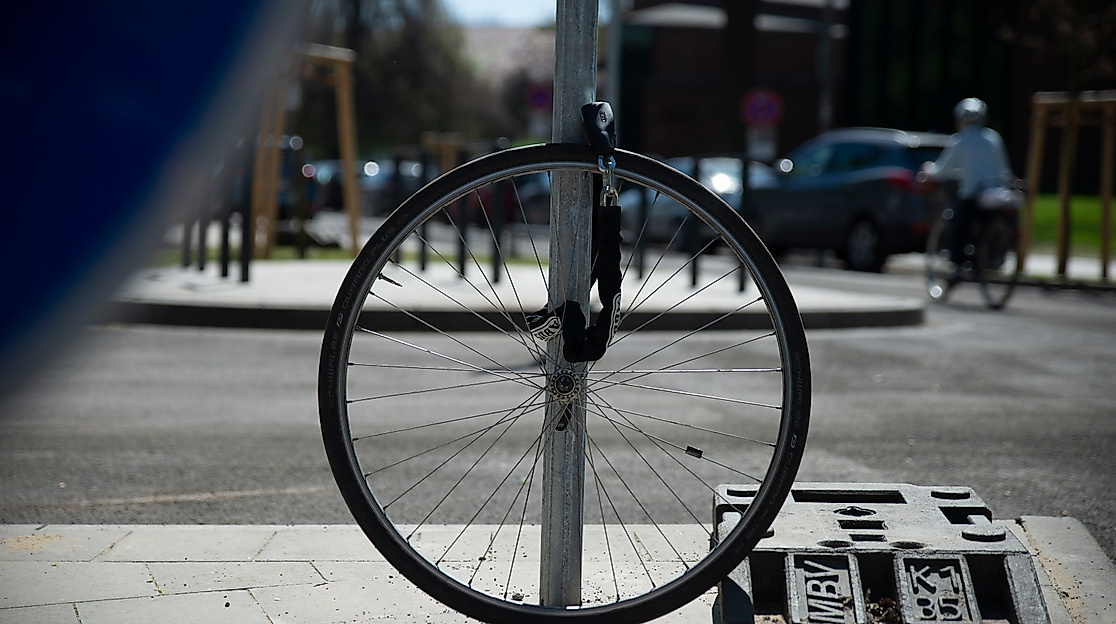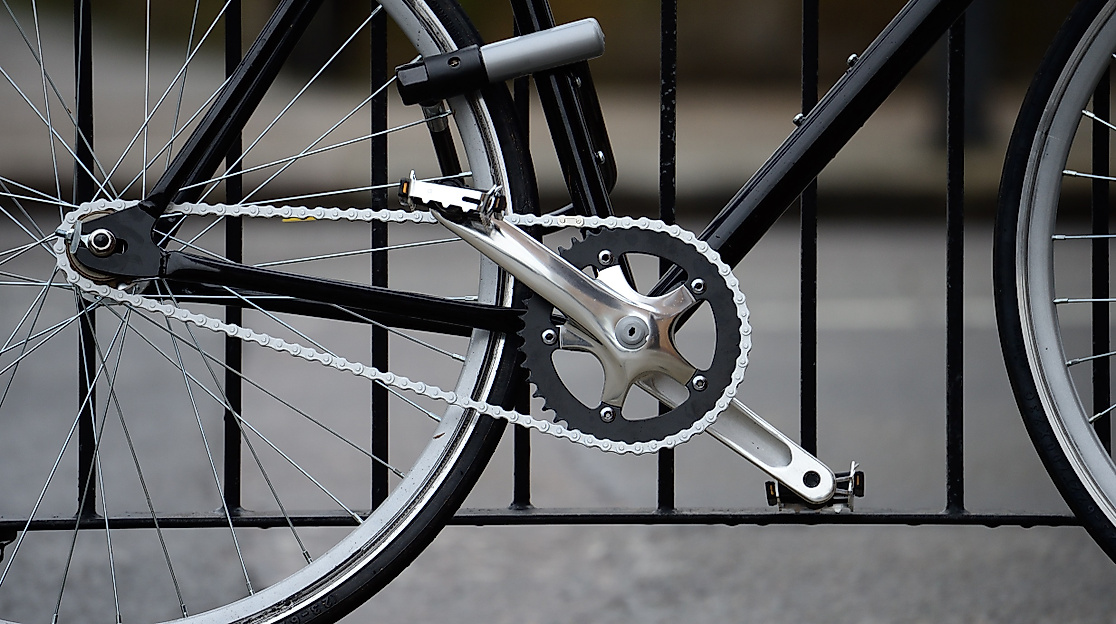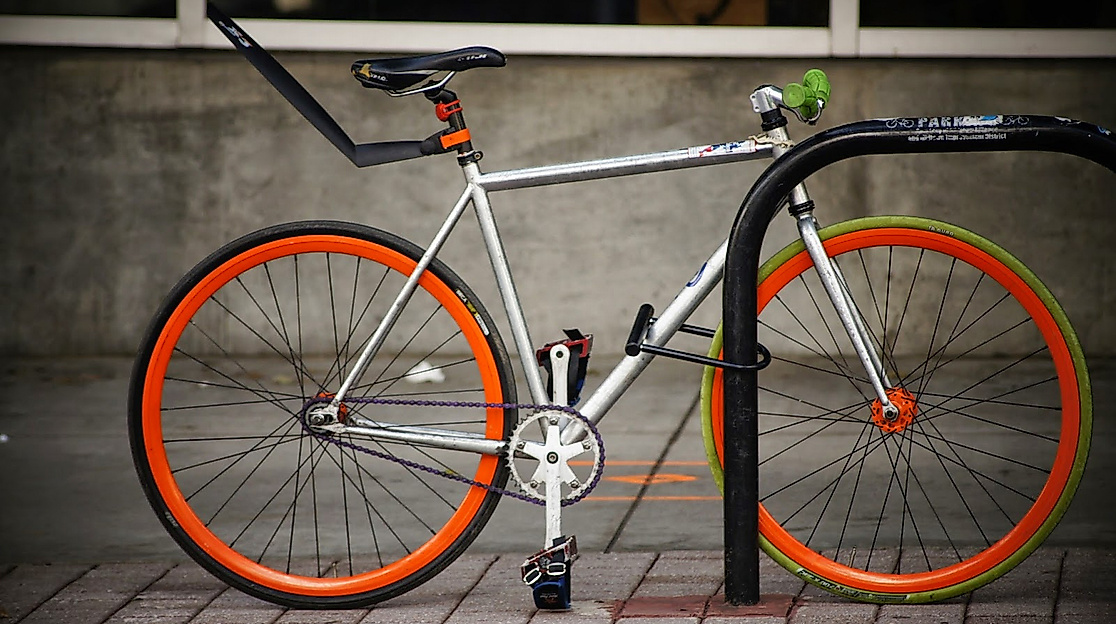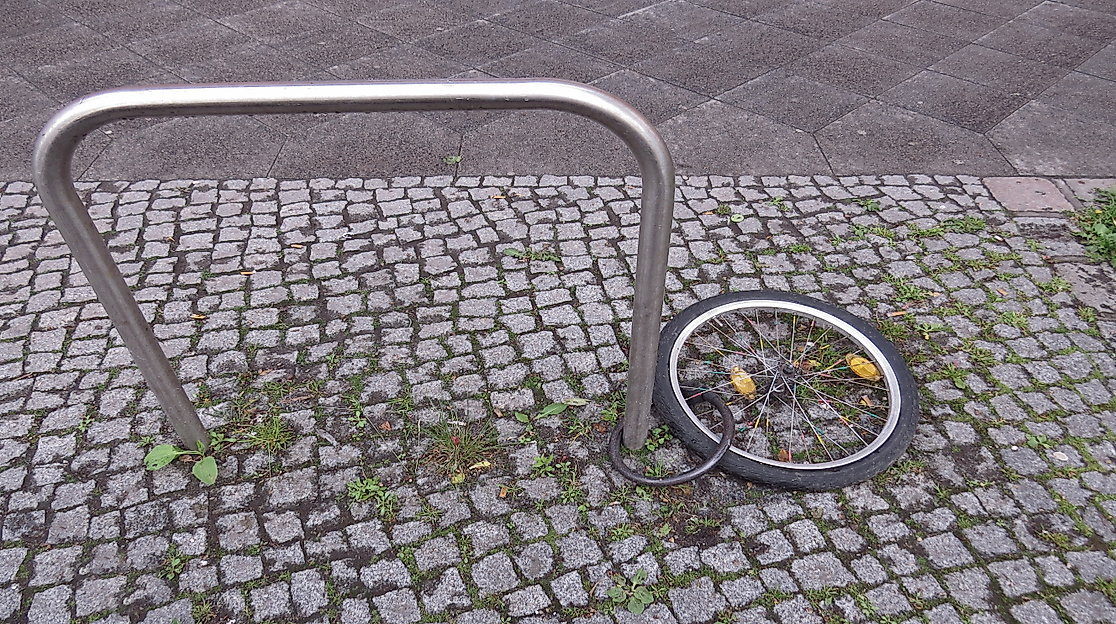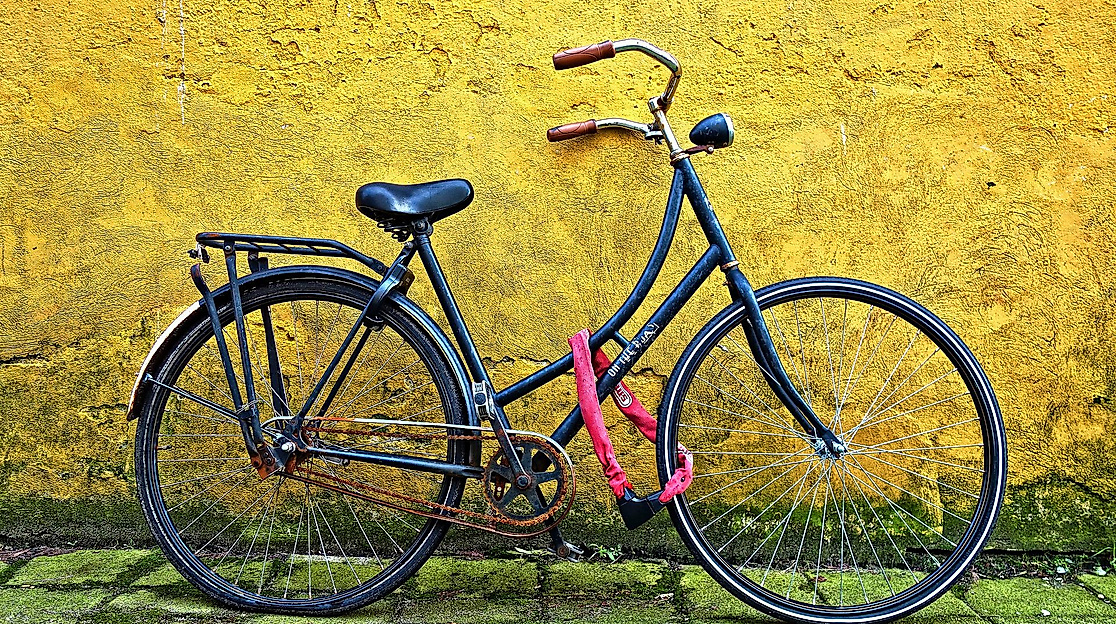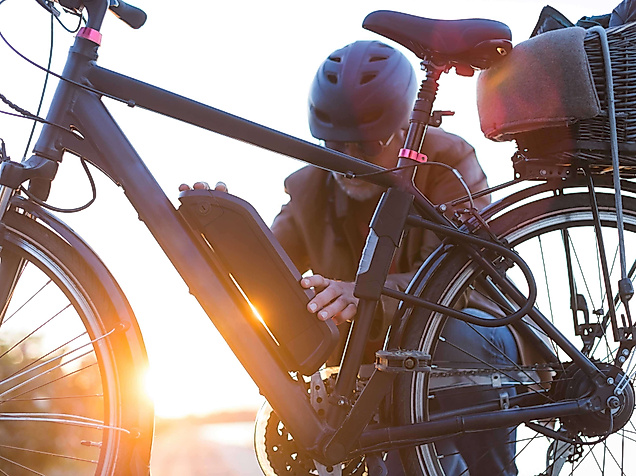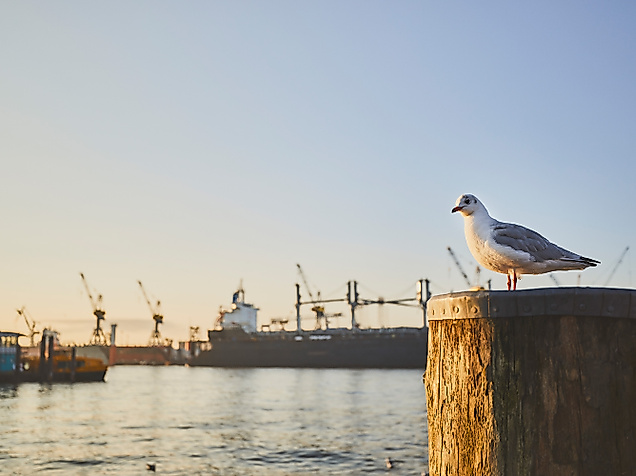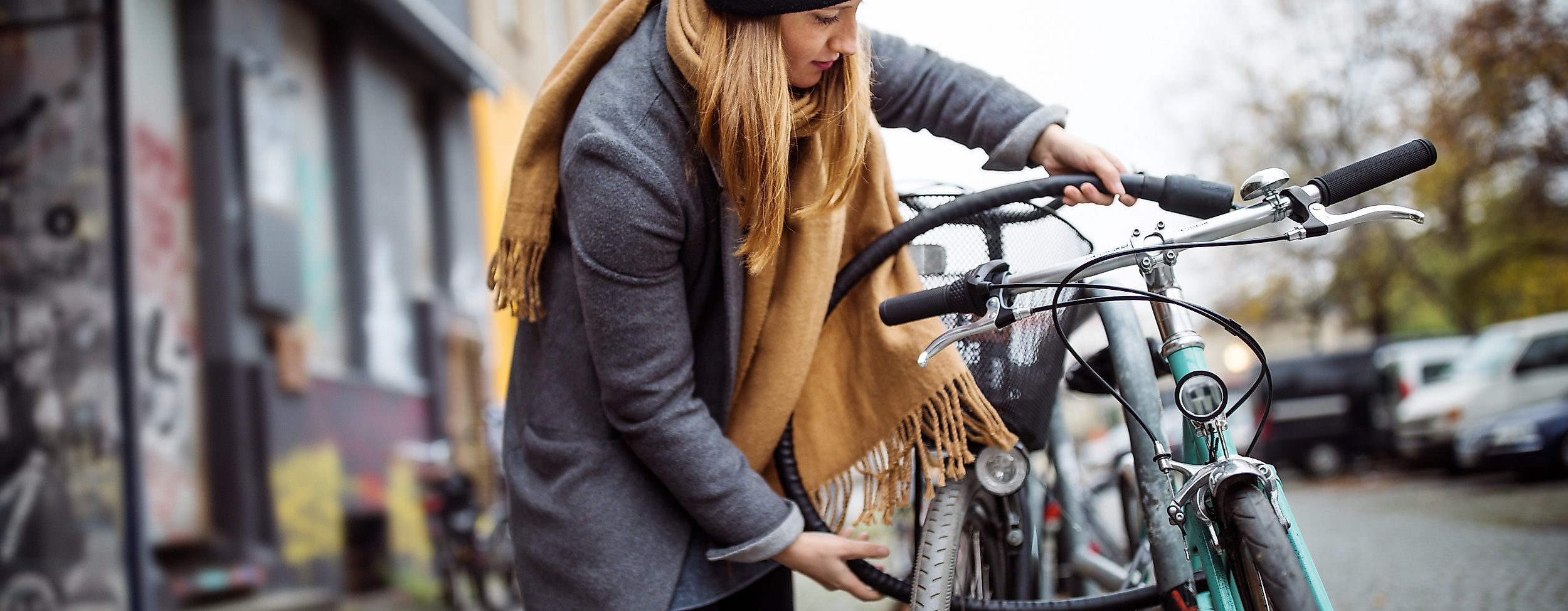

7 tips for more theft protection
How to protect your bike from theft
Lock and unlock correctly Opportunity makes thieves - but you can make it hard for them
Time and again we encounter the sad sight of bicycle tyres attached to lampposts, where unfortunately the frame and the other wheel have gone missing. It has certainly happened to most of us at one time or another that, on the way to the shops, to the office or home, we suddenly find that parts of our bicycle or even the whole beloved piece is missing.
Opportunity makes thieves and unfortunately this also applies to Hamburg. Even an exemplary locked bicycle can fall victim to thieves, because unfortunately there is the right device or the right trick for every bicycle lock. However, there are a number of ways you can make things as difficult as possible for bike thieves, and you can find them out here.
1. lock up instead of locking up
If you only lock the frame and the rear wheel together, you make it extremely easy for thieves - they can simply carry the bike away and break the lock somewhere else. That's why you should always lock your bike to a fixed object, even if you only park it for a short time.
2. always in view
Bicycles locked in dark and hidden alleys are easy prey for thieves because they can remain unobserved. Therefore, always lock your bicycles in well-lit and busy places, for example in a bicycle parking garage.
3. tight is better than loose
The less space there is between the bike lock and the bike, the harder it is for thieves to get their tools to work. If the lock cylinder is also difficult to access, this can cost thieves the crucial seconds they need to pick a lock. This will cost you some time when locking and unlocking, but it should be worth it.
4. prioritise
The frame is the most valuable part of any bicycle. Therefore, a lock should always enclose the frame, the rear wheel and a solid object. The two bolts on a front wheel can loosen even inexperienced hands within seconds, so you should never lock your bike to the front wheel only.
5. change location
We humans love our routines, so we like to park our bikes in the same place. This makes it easier for us to find our bikes again, but at the same time we inadvertently give thieves valuable information about when and where they can strike undisturbed. Ideally, therefore, lock your bicycles in different locations or take them with you to your homes and offices if possible.
6. no accessories are left behind
Plug-in lights, bike computers and bags should never be left unattended, no matter how quickly you dash into a shop or your home. Even a bicycle saddle with a quick-release can get lost quickly and should be replaced by one with a clamping screw.
7. the right lock
No bicycle lock offers absolute security. However, you should not skimp on buying a lock, as thieves usually only have a few minutes or even seconds in which there is not enough time to break open a resistant lock. A rule of thumb says that a lock should cost at least 10 percent of the value of the bicycle. However, even cheap bicycles are better secured with an expensive lock. Expensive bicycles are best locked with two locks - better safe than sorry.
There are many bicycle locks and they all have advantages and disadvantages. Because the manufacturers sometimes do not make it easy for us to compare the different alternatives, here is an overview of the most common locks and what they are suitable for.
The U-lock
The U-lock usually has modern locking systems and can be recognised by its typical U-shape. It consists of a steel shackle and a lock cylinder. If the shackle is made of different steel alloys, it can also withstand forced opening attempts.
Advantages: Due to the small clearance between the wheel and the lock, there is little room for tools and the leverage usually required is made more difficult. Cold sprays also have no chance of giving a U-lock.
Disadvantages: Most U-locks are quite inflexible and often too short to use them to lock bicycles to fixed objects. They are also relatively heavy and bulky.
The folding lock
Folding locks usually consist of six rigid links that can be folded in and out like a folding rule. They can be placed around the frame, rear wheel and a fixed object like a chain lock.
Advantages: The movable links tend to slip when thieves apply saws or other tools, and the flat profile also presents an insurmountable obstacle for bolt cutters. Folding locks are more flexible and usually lighter and more space-saving than U-locks.
Disadvantages: The joints are a possible weak point.
The chain lock
Chain locks consist of many individual, interconnected links, most of which are made of steel. They often have a textile cover that protects the rims and paint of the frame. The thicker a chain lock is, the harder it is to break.
Advantages: Chain locks are flexible, so you can lock your bike almost anywhere.
Disadvantages: They are relatively heavy and, unlike U-locks and folding locks, there is no bracket for them on the frame. However, you can wrap them around the seat post or handlebars. Compared to U-locks and folding locks, they are also considered less secure; only expensive and heavy chain locks can compete with them.
The cable lock
The cable lock consists of a spiral-shaped steel cable coated with plastic.
Advantages: The steel cable can be pulled apart and thus offers a high degree of flexibility when connecting. Cable locks are also lighter than other locks.
Disadvantages: Unfortunately, a cable lock is relatively easy to pick; very few models can stand up to a bolt cutter.
The frame lock
The frame lock is attached to the bicycle frame, usually under the saddle, and encloses the rear wheel when closed. It is therefore a built-in immobiliser.
Advantages: Frame locks are uncomplicated and do not have to be transported.
Disadvantages: With a frame lock, bicycles can only be locked, but not unlocked. Therefore, it should definitely be combined with a lock that can be used to connect the bicycle to a fixed object.
When buying a bicycle lock, you should definitely pay attention to security levels and test seals, which provide information on how well they protect a bicycle from external force. These security levels are a good guide, but the well-known manufacturers each use their own classifications, which is why it is difficult to compare them with each other. Independent testing institutions such as VdS Schadenverhütung GmbH can help you find the right bicycle lock.
Search
Languages
Google translator for other languages
Please note that this is an automatic translation.
For better information, you can always switch to the German or English version
